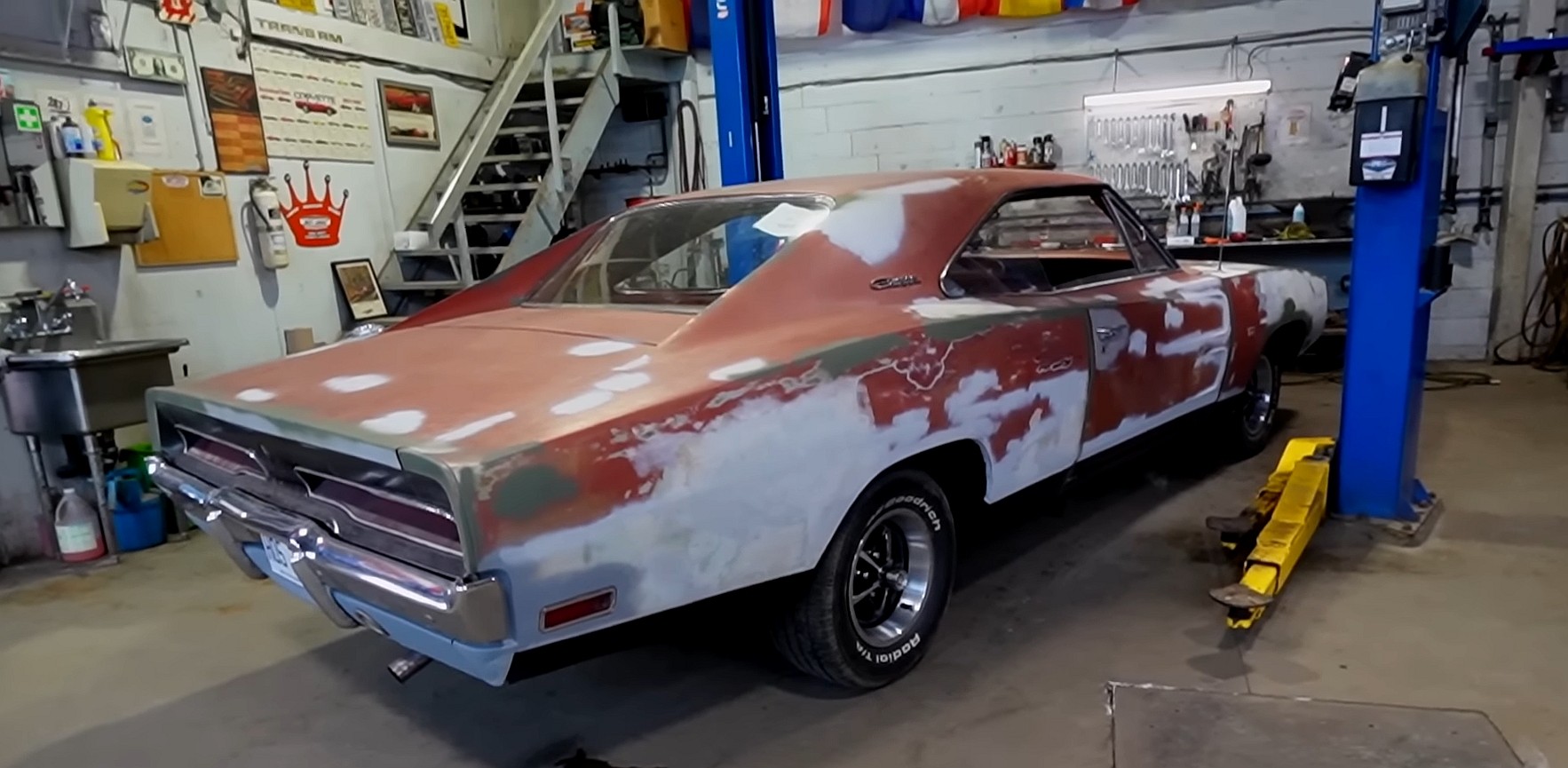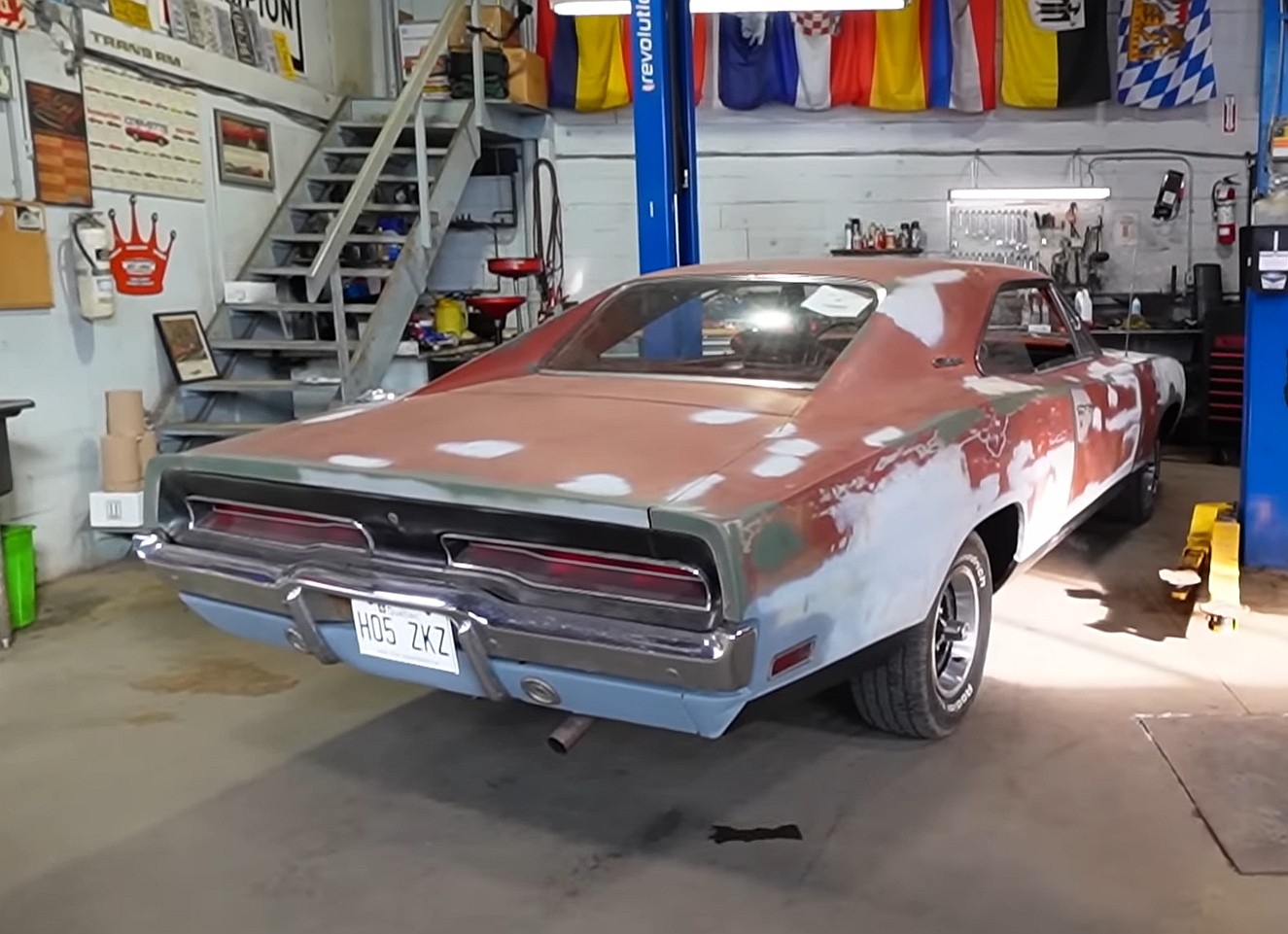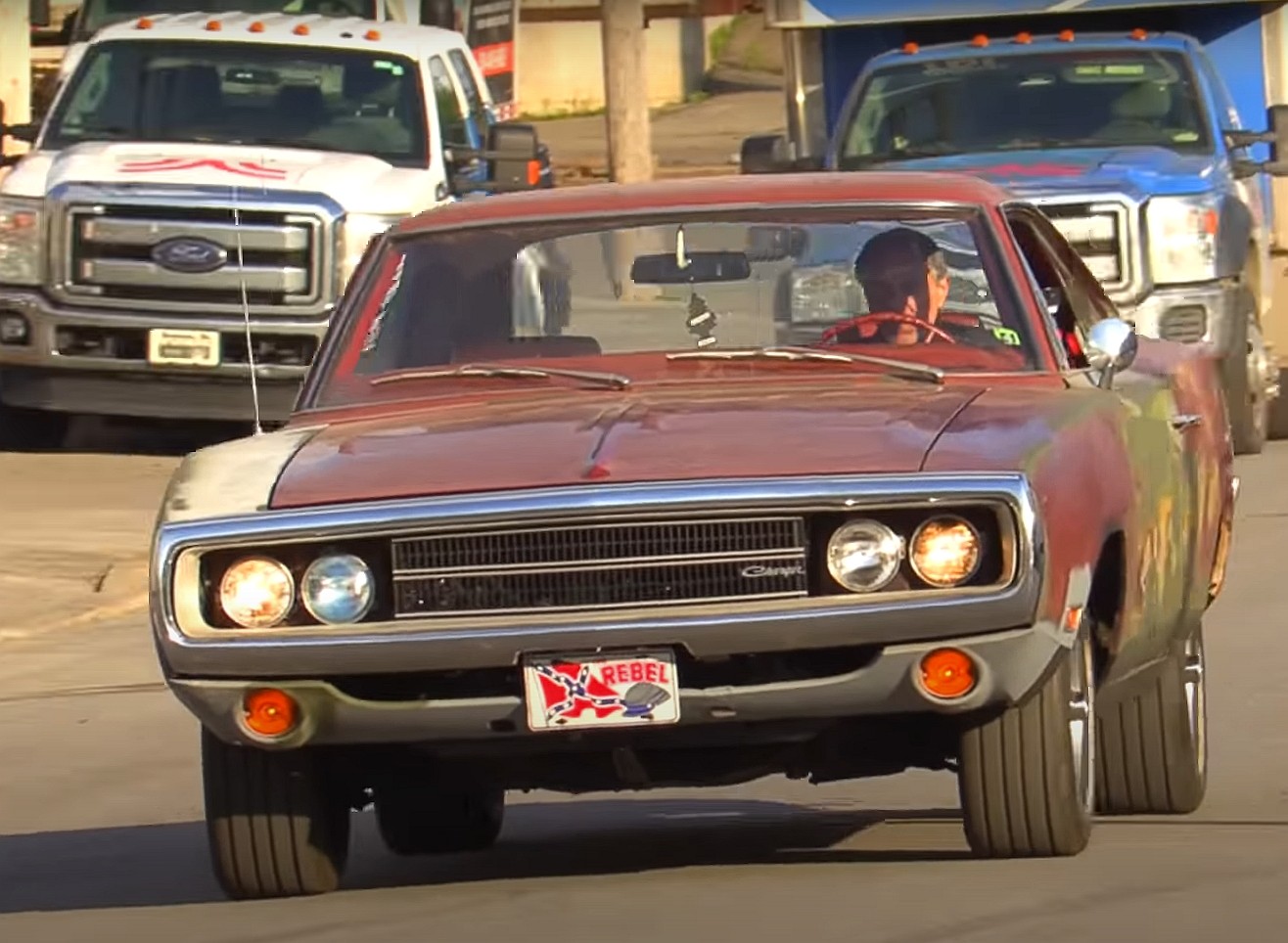Introduced in 1966 as a somewhat luxurious fastback, the Dodge Charger morphed into a full-blown muscle car in 1968. The second second-generation model remained in production for three years, and it’s now the most desirable iteration of the Charger.While largely similar, all three model years came with unique design features. The 1968 Charger featured a full-width razor-like front grille, whereas the 1969 got a center divider. Around the back, Dodge replaced the round quad taillights with horizontal units. In 1970, Dodge reverted to the full-width grille and added wraparound chrome trim. A taillight panel found its way on the 500 and R/T models.
The second-gen Charger hit showrooms with various V8 engines, ranging from the 318-cubic-inch (5.2-liter) LA to the 426-cubic-inch (7.0-liter) HEMI. But unlike its first-generation predecessor, it also got an inline-six. Introduced as a replacement for the two-barrel 318 V8 in mid-1968, the 225-cubic-inch (3.7-liter) “Slant-Six” remained in production through 1970. The final second-gen year also introduced the 440-cubic-inch (7.2-liter) V8 “Six-Pack.”

All told, the 1970 Charger came with the greatest Mopar engines available at the time. Rated at 390 horsepower, the “Six-Pack” slotted between the four-barrel 440 V8, which came with 375 horsepower on tap, and the 426 HEMI. The latter turned the Charger into a dragstrip beast by sending 425 horsepower to the rear wheels. All three mills were available in the R/T trim, and all three are rare and desirable.
The 426 HEMI is obviously the rarest of the bunch. Because while Dodge sold an impressive 49,500 Chargers in 1970, only 124 were ordered with the range-topping mill. Why so few, you ask? Well, the expensive sticker, the high insurance rates, and the looming oil crisis kept many enthusiasts away from big-block power.
The 440 “Six-Pack” and the 440 four-barrel are next in line regarding collectibility. The former is also quite rare at only 684 units sold. But here’s an interesting bit of info you probably didn’t know. As desirable as it is, the “Six-Pack” is actually more common than the entry-level 225 “Slant-Six.” That’s because the latter was dropped in only 300 cars (although some sources claim 249 units).

Sure, unlike the 440 and the HEMI, the “Slant-Six” wasn’t popular simply because it did not offer a lot of oomph for the heavy Charger. Rated at 145 horsepower and 215 pound-feet (292 Nm) of torque, it pushed the hardtop from 0 to 60 mph in more than 12 seconds. As a result, many of these cars were eventually hot-rodded, while others were scrapped after a few years on the road.
There’s no info on how many “Slant-Six” Chargers are still around (no one bothered to keep track anyway), but there’s at least one survivor that soldiered on for decades with all of its numbers-matching elements still intact. It was recently featured by YouTube’s “Nick’s Garage,” which welcomed the Mopar for a much-needed drivetrain inspection. And yes, this thing still runs, and it’s about to get a proper restoration after some 15 years in storage.
Moreover, it’s also a very early production car, built in the first week of the 1970 model year (August 1969). And if some of the enthusiasts that commented on the video are correct, it could also be a vehicle built for auto shows, TV commercials, or dealer promotions. Because these cars were usually assembled before regular production commenced back in the day.
Granted, that’s hard to verify without extensive paperwork from the factory, but it’s still a remarkable survivor with a rare albeit not-very-desirable powerplant. And the even better news is that the owner wants to keep the inline-six. Hopefully, we’ll see more of this underappreciated Mopar when it gets restored to its original specifications. Until that happens, check it out in the video below.
